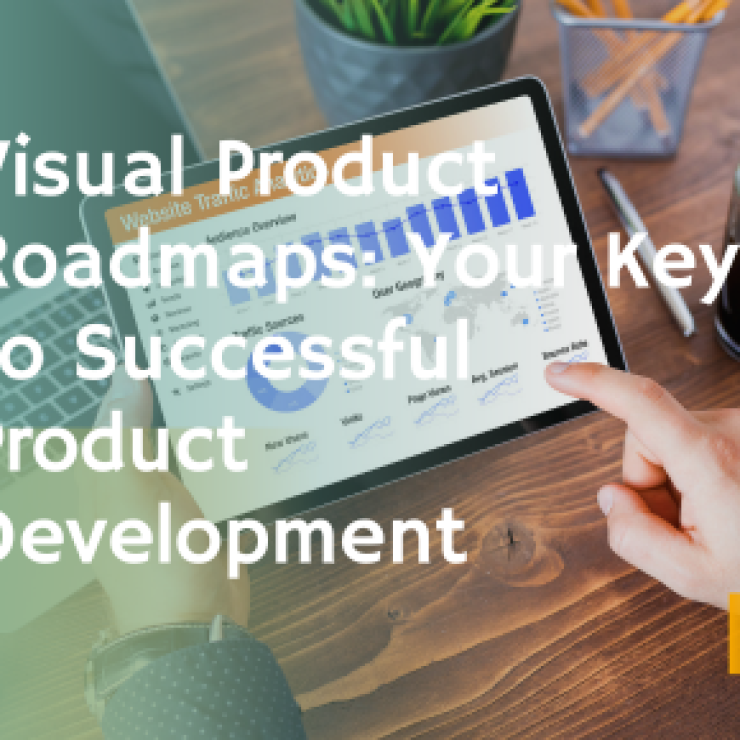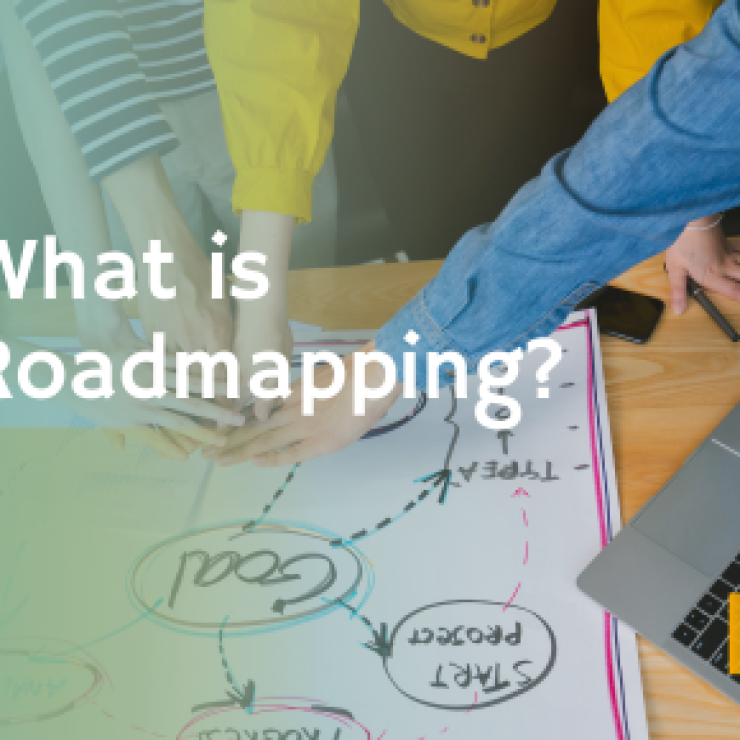Every successful product begins with a roadmap, a strategic plan that describes the direction the product is heading over time. A roadmap communicates the ‘why’ behind what you’re building.
But the key to a useful and effective product roadmap is prioritization. “Product roadmap prioritization” is a vital process that every product manager needs to master to ensure their product’s success.
In this blog post, we delve into the essence of product roadmap prioritization, why it’s essential, and the strategies you can use to achieve it.
Understanding Product Roadmap Prioritization
Product roadmap prioritization is a systematic process used to decide which product features or improvements should be developed first based on their value, cost, risk, and alignment with business goals.
It’s about choosing the right things to work on at the right time to maximize product value. In a world of limited resources—time, money, and manpower—prioritization helps teams focus on what matters most for both the business and the customers.
The Role of Stakeholders in Product Roadmap Prioritization
Product roadmap prioritization is not a one-man show; it involves various stakeholders, including product managers, developers, marketers, customers, and executives. Each of these stakeholders plays a crucial role in shaping the product roadmap.
Their input, based on their expertise and viewpoints, can bring in diverse insights, thus fostering a more balanced and comprehensive roadmap.
For instance, customer feedback can illuminate the features that truly matter to your users, while the executive team can provide strategic direction aligning with the company’s goals.
Criteria for Prioritization
In order to prioritize effectively, you must first establish clear criteria that will inform your decision-making process. The specific criteria you choose may vary depending on your business context, product stage, and strategic goals. However, here are some universal factors to consider:
Business Value:
This refers to the potential of a feature or product update to contribute towards the overall business objectives. This could include its capacity to increase revenue, capture new market segments, enhance brand reputation, or drive customer loyalty.
This requires a good understanding of your business strategy and a capacity to forecast the potential impact of each proposed feature.
Customer Impact:
This metric addresses the question: “How much will this feature or update matter to our customers?” It’s essential to understand your users’ needs and challenges and how your product can provide solutions.
Customer surveys, user interviews, and user testing can be invaluable in gathering this insight.
Cost:
This encompasses the resources – time, money, and labor – that would be required to develop and implement the feature or update.
This should include not only the development time but also the resources required for testing, debugging, user training, and customer support.
Risk:
This involves evaluating both the risks of implementing the feature and the risks of not doing so. Risks could include technical risks (can we build this?), market risks (will customers use it?), and opportunity costs (is this the best use of our resources?).
Methods for Roadmap Prioritization
The method you use for prioritization will largely depend on the nature of your product and the specific challenges you’re trying to address. Here are some popular methods:
RICE:
RICE stands for Reach, Impact, Confidence, and Effort. The RICE method gives a score to each proposed feature based on these four factors, helping teams to make decisions that will maximize impact and reach while minimizing effort and risk.
MoSCoW:
This approach involves categorizing potential features into four buckets – Must have, Should have, Could have, and Won’t have. This allows teams to quickly identify and focus on the most critical features.
Value vs. Effort:
This simple, visual approach involves plotting potential features on a matrix according to their estimated value (how beneficial they will be to the user or business) against their estimated effort (how many resources they will consume).
Kano Model:
This model encourages teams to think about customer satisfaction. It classifies features into five categories based on how customers perceive them: Must-be (basic expectations), Attractive (delighters), One-dimensional (satisfaction increases as functionality improves), Indifferent, and Reverse (features that could lead to dissatisfaction).
Strategies for Streamlining Your Product Roadmap Prioritization
Product roadmap prioritization is a crucial process that can significantly impact your product’s trajectory and your team’s focus. The following strategies can be adopted to ensure effective prioritization.
Ensure Alignment with Business Goals:
The first step in successful prioritization is to make sure that all the features or improvements on your roadmap align perfectly with your business’s overall objectives.
Are they in line with your mission, vision, and strategic goals? Every item on your roadmap should, in some way, contribute to the broad organizational goals, whether it’s growing market share, enhancing customer satisfaction, or increasing revenue.
By ensuring this alignment, every decision you make serves a purpose and propels your business towards its strategic targets.
Achieving the Right Balance Between Short-term and Long-term Goals:
This strategy is all about harmony and balance. While it’s important to focus on short-term goals that can quickly deliver value to your customers and immediate returns to your business, you should not lose sight of your long-term goals either.
These are the goals that uphold your vision for the product and ensure its sustained growth. So, while prioritizing, aim for a healthy mix of features that address immediate customer needs and those that set the foundation for future development.
This approach will keep your customers satisfied in the present while securing your product’s future.
Maintain Flexibility:
It’s important to remember that your product roadmap isn’t set in stone. It’s a dynamic document that should evolve as per changes in the market landscape, customer needs, or business goals. This is where flexibility comes into play.
If a newly discovered customer need becomes a high priority, you should be ready to adjust your roadmap accordingly. Or, if market trends shift drastically, you should have the flexibility to adapt your roadmap to capitalize on new opportunities or to ward off emerging threats.
Embrace change as an integral part of the roadmap management process, and be prepared to pivot whenever necessary.
Involve All Stakeholders:
The best product decisions are often those that are informed by diverse perspectives. Hence, ensure to involve all stakeholders in the prioritization process, including product managers, developers, marketers, sales representatives, customer support, and even the customers themselves.
Each stakeholder brings a unique perspective that could provide valuable insights into what should be prioritized.
Iterate and Review Regularly:
Prioritization is not a one-off event; it’s an ongoing process. Make it a habit to regularly review and update your product roadmap.
This includes analyzing completed features for their impact on business goals, assessing the relevance of upcoming features in light of any new developments, and constantly keeping an eye out for potential new additions to the roadmap.
Implementing these strategies can help you manage your product roadmap more effectively, ensuring that your team is always working on the most impactful tasks, and that your product continues to grow and evolve in line with your customers’ needs and your business goals.
Tools for Roadmap Prioritization
SAASFE
SAASFE is a platform that helps manage various aspects of software development, including product roadmaps, backlogs, customer feedback, and product launch plans. It’s designed to provide a holistic view of your product’s development and help you make data-driven decisions.
How does SAASFE aid in Roadmap Prioritization?
SAASFE assists in roadmap prioritization in several key ways:
Centralized Product Backlog: SAASFE allows you to maintain a centralized product backlog where you can add, edit, and manage all the potential features or improvements for your product. Having everything in one place simplifies the process of comparing and prioritizing different features.
Customer Feedback Integration: The platform facilitates the collection and analysis of customer feedback. You can link feedback directly to features in your product backlog, which provides invaluable user-centric data to help prioritize features that would most resonate with your customers.
Roadmap Visualization: With SAASFE, you can visualize your prioritized roadmap. This provides a clear view of what’s planned for the product, aids communication with stakeholders, and allows easy adjustments as priorities shift.
Collaboration Features: SAASFE enables collaboration between different stakeholders, ensuring diverse inputs in the prioritization process. Stakeholders can comment, vote, or discuss potential features, fostering an inclusive decision-making environment.
Conclusion
Product roadmap prioritization is a powerful tool in the product manager’s toolkit. It ensures your team is working on the right things at the right time to deliver maximum value to both your business and your customers.
By following the strategies and best practices outlined in this blog, you’ll be well on your way to mastering product roadmap prioritization.




